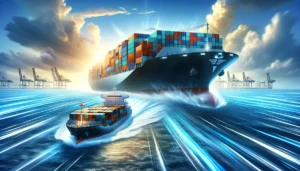In the aftermath of the COVID-19 pandemic, the freight forwarding industry has been thrust into uncharted waters. Supply chain disruptions, a surge in e-commerce, and evolving customer expectations are just a few of the challenges that logistics and freight forwarding companies have to grapple with. As businesses seek to adjust to this new landscape, understanding what has changed and how to adapt is more critical than ever.
What’s Changed
Supply Chain Complexity
The pandemic disrupted supply chains globally. Trade restrictions, port closures, and workforce reductions have all contributed to a more complicated freight forwarding environment.
Digital Transformation
The adoption of technology has accelerated exponentially during the pandemic. From blockchain to AI, logistics technology companies have introduced solutions that are changing the traditional ways of freight forwarding.
Customer Expectations
Consumers now expect faster delivery, real-time tracking, and greater transparency, putting pressure on logistics companies to up their game.
Sustainability Focus
The pandemic has heightened awareness around environmental responsibility, prompting companies to look for greener supply chain solutions.
How to Adapt
Embrace Technology
Consider incorporating solutions offered by leading logistics technology companies. Automation can help streamline operations, and AI can offer valuable insights for decision-making.
Optimize for Resilience
Prioritize flexibility in your operations to adapt to unforeseen disruptions. This includes having a diverse set of suppliers and transport options.
Enhance Customer Experience
Invest in technologies that offer real-time tracking and automated customer service to meet the elevated expectations of your client base.
Sustainability as a Service
Consider offering eco-friendly shipping options or partnering with organizations that offset carbon emissions. This can be a selling point for environmentally-conscious customers.
Regularly Review KPIs
In this fast-changing environment, regularly reviewing your Key Performance Indicators (KPIs) can help you adapt your strategies effectively. Monitor factors like on-time delivery rates, cost efficiency, and customer satisfaction to gauge your performance.
Training and Upskilling
Continuous learning is essential for adapting to new tools and technologies. Make sure your team is equipped with the necessary skills to navigate the complexities of the post-pandemic world.
By understanding these shifts and implementing adaptive strategies, freight forwarding businesses can not only survive but thrive in this new normal. As the industry continues to evolve, staying agile and forward-thinking will be key to long-term success and sustainability.



